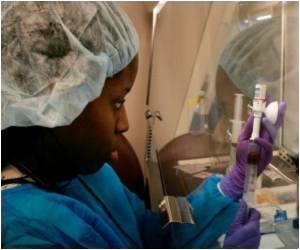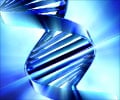
"Supramolecular chemistry focuses on understanding what forces make molecules stick together, and using these forces to control the assembly of functional systems. This assembly process is much like Lego blocks, where bumps and dimples interact to hold biomolecules like DNA and proteins together," said Rotello.
Rotello and colleagues covered specialized gold nanoparticles with ligand or binding molecules (the bump) that made the particles toxic.
These ligands, however, also can strongly bind to a hollow, bowl-shaped molecule (the dimple to which the bump sticks) called a cucurbituril that can make the particle non-toxic.
When the gold nanoparticles are introduced into living cells, they lie dormant. The researchers then use another molecule that binds strongly to the dimple-shaped cucurbiturils, pulling them away from the gold nanoparticle so it becomes uncloaked and toxic.
"This triggered toxicity opens up new directions for controlled chemotherapeutics, where toxicity can be tuned by and directed through choice and amount of added activator," said Rotello.
Advertisement
Source-ANI









